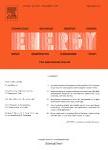版权所有:内蒙古大学图书馆 技术提供:维普资讯• 智图
内蒙古自治区呼和浩特市赛罕区大学西街235号 邮编: 010021

作者机构:Southeast Univ Sch Elect Engn Nanjing 210000 Jiangsu Peoples R China State Grid Beijing Municipal Elect Power Co Beijing 100031 Peoples R China Tsinghua Univ Dept Elect Engn Beijing 100084 Peoples R China State Grid Smart Grid Res Inst Beijing 102209 Peoples R China Imperial Coll London Dept Elect & Elect Engn London SW7 2AZ England
出 版 物:《ENERGY》 (能源杂志)
年 卷 期:2024年第305卷
核心收录:
学科分类:0820[工学-石油与天然气工程] 08[工学] 0807[工学-动力工程及工程热物理]
主 题:Integrated regional energy systems Optimal operating model Response to energy price Optimization algorithm Sustainable energy supply
摘 要:With dynamic changes in the energy market and continuous advances in smart energy technology, regional integrated energy systems (RIESs) have emerged as a vital direction in the evolution of energy systems. They are increasingly gaining significance in the realm of energy supply (ES) and demand response initiatives. In this context, this article introduces a novel optimal operational model for an integrated energy system (IES) that incorporates energy price responsiveness. The paper commences by delivering a comprehensive overview of the typical structure of an IES, presenting detailed models for each system module, encompassing the electrical energy supplier, heating, and cooling components. The proposed system model comprises three distinct subsystems, each catering to specific energy requirements. The primary emphasis is on devising an efficient planning scheme tailored to the energy consumption patterns and operational aspects of the IES. Through the presented model, there is substantial potential for significantly reducing the overall system cost without inducing a noteworthy upsurge in environmental pollution. Moreover, the energy efficiency of the system can experience considerable enhancement. The desired optimization problem has been solved using the proposed multiobjective Horse Herd Optimization Algorithm (MOHHOA). Additionally, in this strategy, Pareto front and fuzzy selection are employed to make better decisions among all Pareto solutions. The optimization strategy devised in this research not only enables the integrated operation of the IES but also ensures its compatibility with ongoing energy development initiatives. The proposed method yields a diverse set of Pareto solutions across the objective space, providing various trade-offs between economic, environmental, and reliability considerations. Utilizing MOHHOA, the algorithm efficiently balances exploration and exploitation during optimization, resulting in informed decision-making. In optimal p